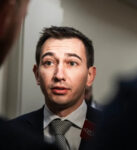
Anne and Phillip lived 5 kms down the road. To give you an idea of what that meant, if I walked to their farm I passed 4 other houses. In those first couple of years I went there a lot. They looked after me. They rescued me. . . . → Read More: Meet Anne and Phillip of Waikaretu






